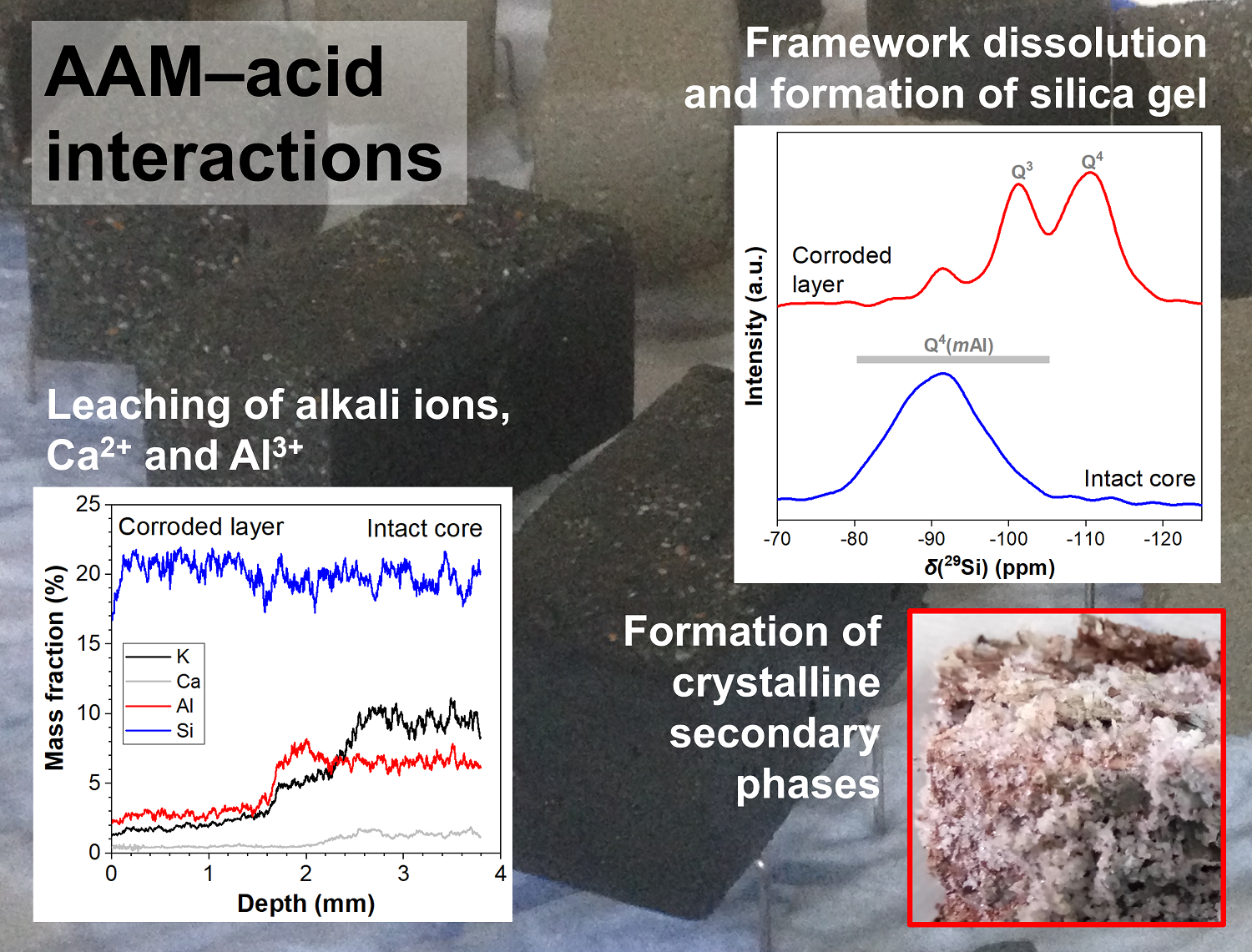Acid resistance of alkali-activated materials: recent advances and research needs
DOI:
https://doi.org/10.21809/rilemtechlett.2022.157Keywords:
Acid corrosion, Inorganic acids, Organic acids, Durability, GeopolymersAbstract
Cementitious materials are frequently applied in environments in which they are exposed to acid attack, e.g., in sewer systems, biogas plants, and agricultural/food-related industries. Alkali-activated materials (AAMs) have repeatedly been shown to exhibit a remarkably high resistance against attack by organic and inorganic acids and, thus, are promising candidates for the construction and the repair of acid-exposed structures. However, the reaction mechanisms and processes affecting the acid resistance of AAMs have just recently begun to be understood in more detail. The present contribution synthesises these advances and outlines potentially fruitful avenues of research. The interaction between AAMs and acids proceeds in a multistep process wherein different aspects of deterioration extend to different depths, complicating the overall determination of acid resistance. Partly due to this indistinct definition of the ‘depth of corrosion’, the effects of the composition of AAMs on their acid resistance cannot be unambiguously identified to date. Important parallels exist between the deterioration of low-Ca AAMs and the weathering/corrosion of minerals and glasses (dissolution-reprecipitation mechanism). Additional research requirements relate to the deterioration mechanism of high-Ca AAMs; how the character of the corroded layer influences the rate of deterioration; the effects of shrinkage and the bond between AAMs and substrates.

Downloads
Published
How to Cite
Issue
Section
License
Copyright (c) 2022 Gregor J. G. Gluth, Cyrill Grengg, Neven Ukrainczyk, Florian Mittermayr, Martin Dietzel

This work is licensed under a Creative Commons Attribution 4.0 International License.
Authors retain copyright of the articles published in RILEM Technical Letters and grant the journal the right of first publication with open access. The work is simultaneously licensed under Creative Commons Attribution 4.0 International License (CC BY 4.0) that allows others to share and adapt the work under the following terms: 1) a proper attribution is given in a form of bibliographic record with the DOI link directing to RILEM Technical Letters; 2) a link to the license is provided; 3) the changes (if any) are indicated.









